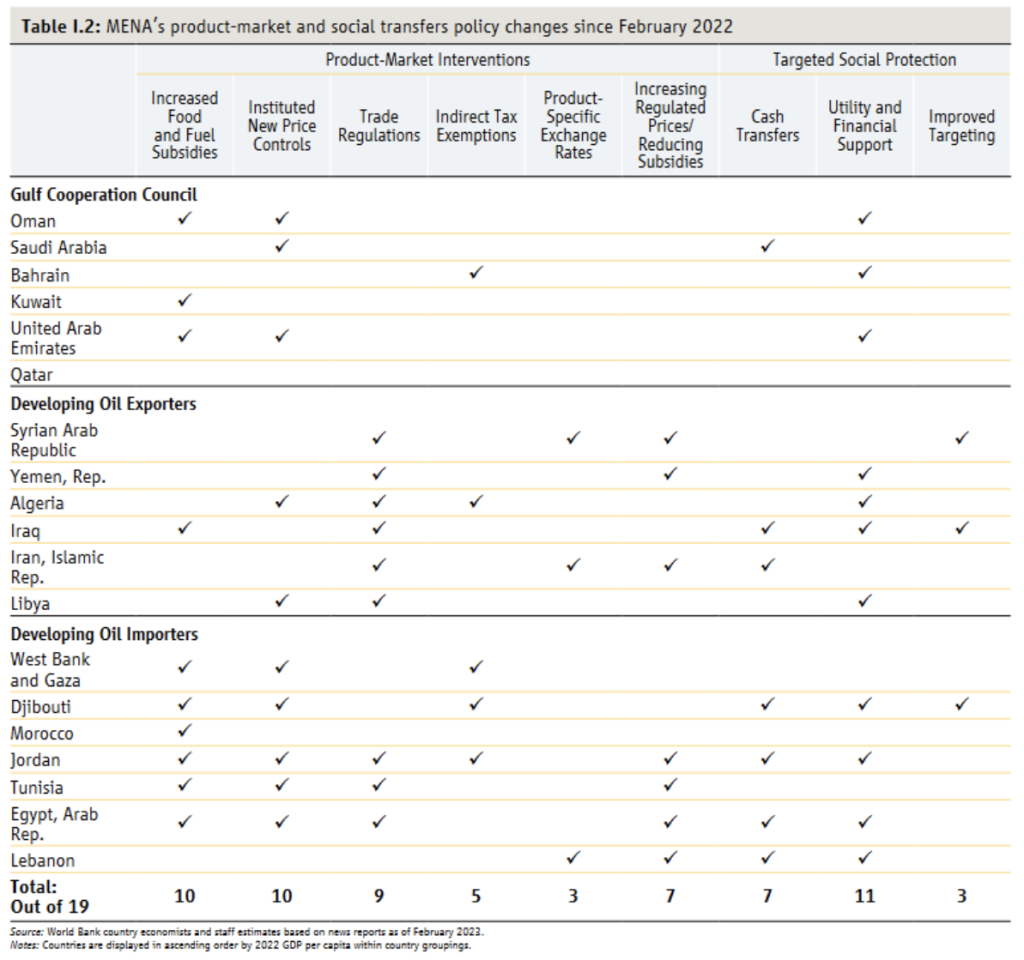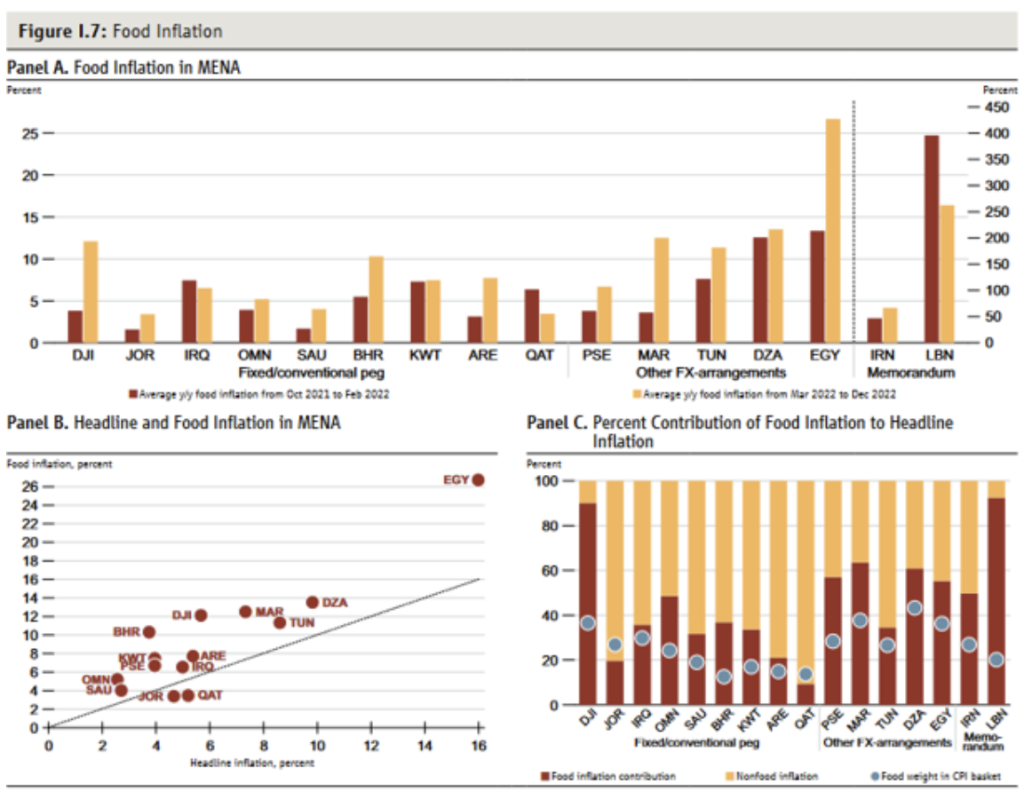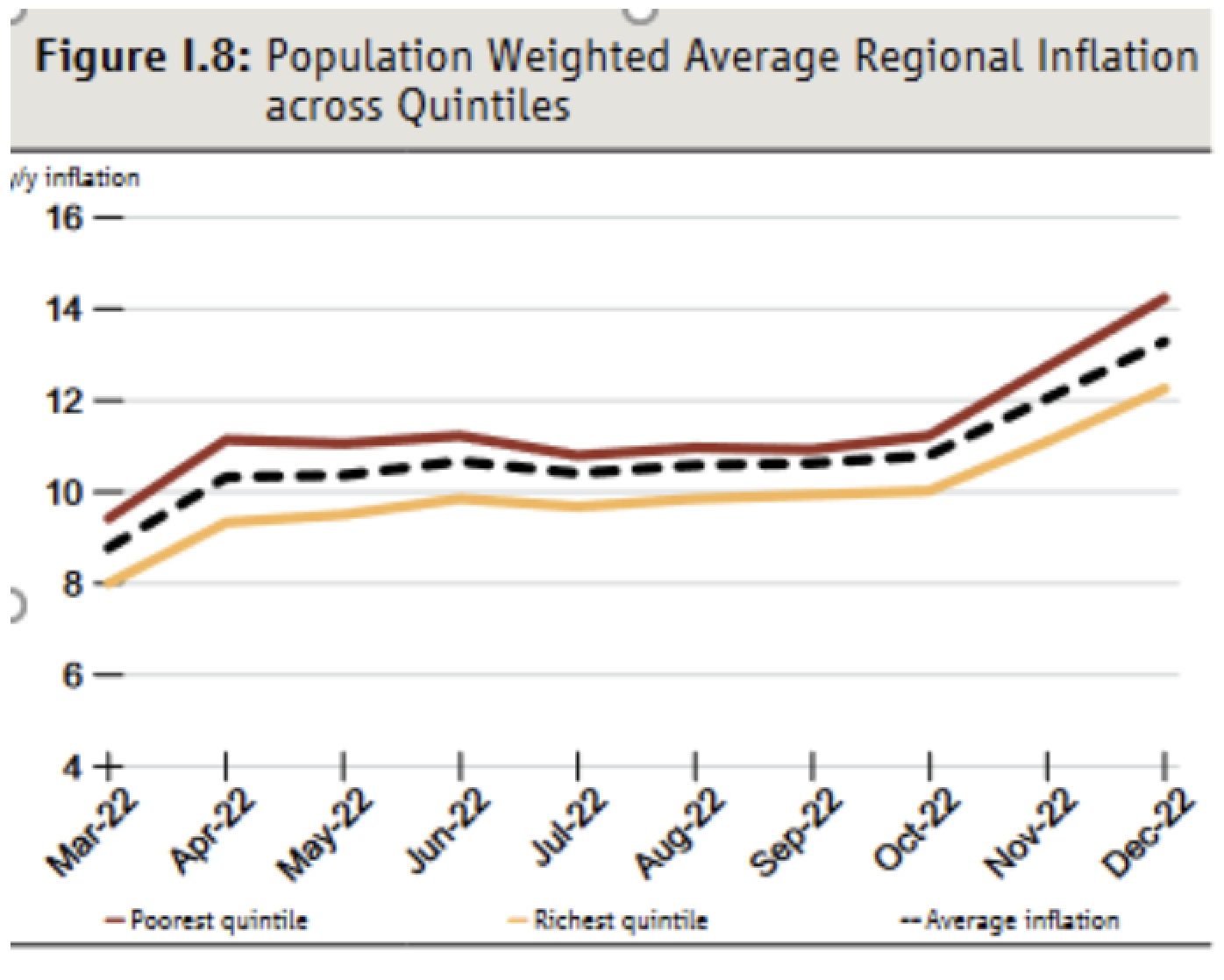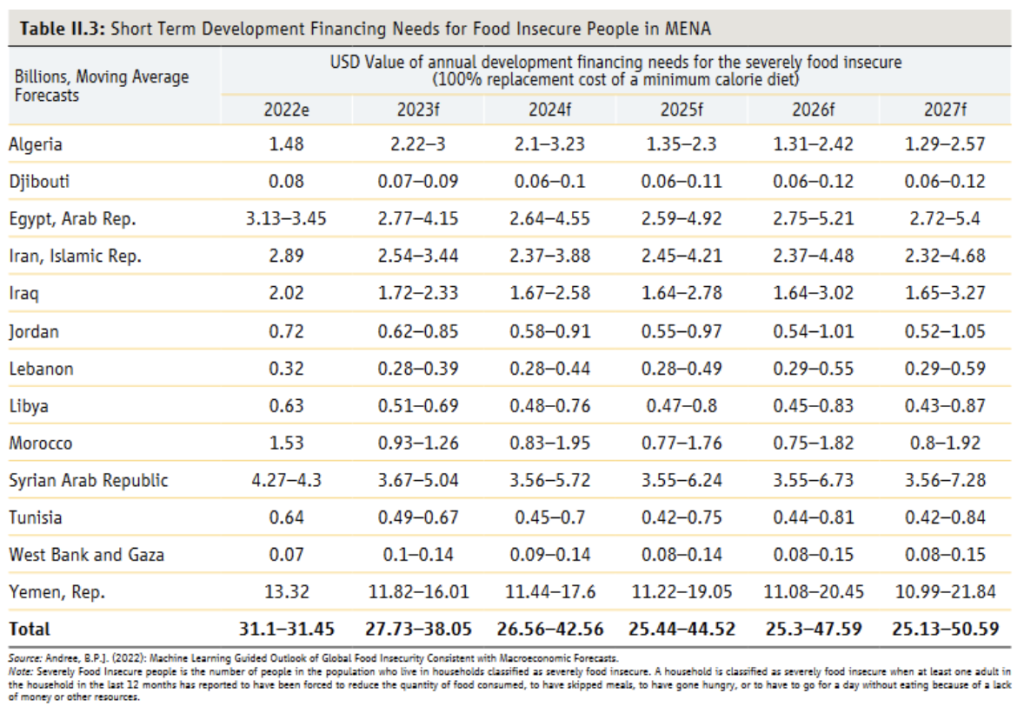Highlights:
-
When faced with rising prices in commodity markets, in particular oil and food, countries in MENA put in place policies aimed at containing domestic inflation. Despite these efforts, food inflation in most MENA economies increased since the war in Ukraine and indeed was higher than headline inflation. Increases in the price of food products accounted for half or more of the headline inflation.

-
Rising food prices intensify food insecurity, which is not only an immediate concern, but has repercussions across generations.
-
Lack of proper nutrition—in utero or during early childhood—increases the risk of stunting and worsens schooling outcomes. Rough estimates show that 200,000–285,000 newborns may have been at risk of stunting in the developing countries in the Middle East and North Africa (MENA) due to rising food prices since the war in Ukraine. About 8 million children in the MENA region are forecast to be in food insecurity situations in 2023. Child nutrition and health were lacking even before the pandemic.
-
The prevalence of food insecurity in MENA is high and is projected to increase. Syria and Yemen are classified as hunger hotspots based on the Integrated Food Security Phase Classification.

-
In developing MENA, the poorest and most vulnerable households experienced higher levels of inflation than their richer counterparts. This is a direct consequence of elevated food inflation and the outsize share that food products have in poorer households’ expenditure

-
Rising food prices intensify food insecurity, which is not only an immediate concern, but has repercussions across generations.
-
Lack of proper nutrition—in utero or during early childhood—increases the risk of stunting and worsens schooling outcomes. Rough estimates show that 200,000–285,000 newborns may have been at risk of stunting in the developing countries in the Middle East and North Africa (MENA) due to rising food prices since the war in Ukraine. About 8 million children in the MENA region are forecast to be in food insecurity situations in 2023. Child nutrition and health were lacking even before the pandemic.
-
The prevalence of food insecurity in MENA is high and is projected to increase. Syria and Yemen are classified as hunger hotspots based on the Integrated Food Security Phase Classification.

-
The annual development financing needs for the severely food insecure population is forecast to be in the billions of dollars. Policymakers can address food insecurity in several ways: using social protection measures such as cash and in-kind transfers, through childcare and maternity leave policies, and by improving maternal education. Data transparency is a first step.

| Year of publication | |
| Authors | |
| Geographic coverage | North AfricaYemenSyriaTunisiaMoroccoDjiboutiAlgeriaEgyptJordanIraqLebanonLibyaGlobalMiddle East |
| Originally published | 02 May 2023 |
| Related organisation(s) | World Bank |
| Knowledge service | Metadata | Global Food and Nutrition Security | Food security and food crises Nutrition | Food and nutrition securityAccess to foodFood price crisis |
| Digital Europa Thesaurus (DET) | economic analysisinflationprice of agricultural produce |
